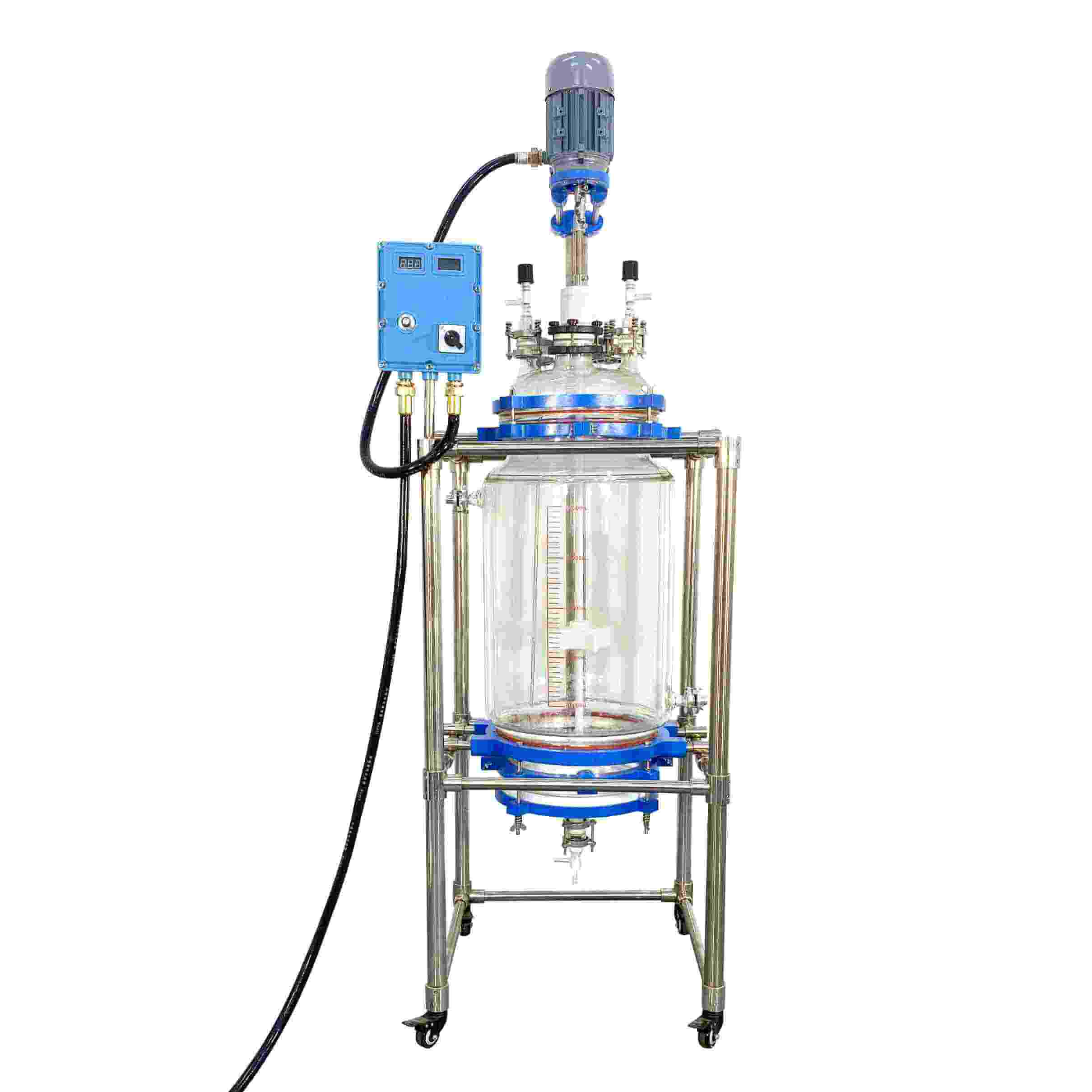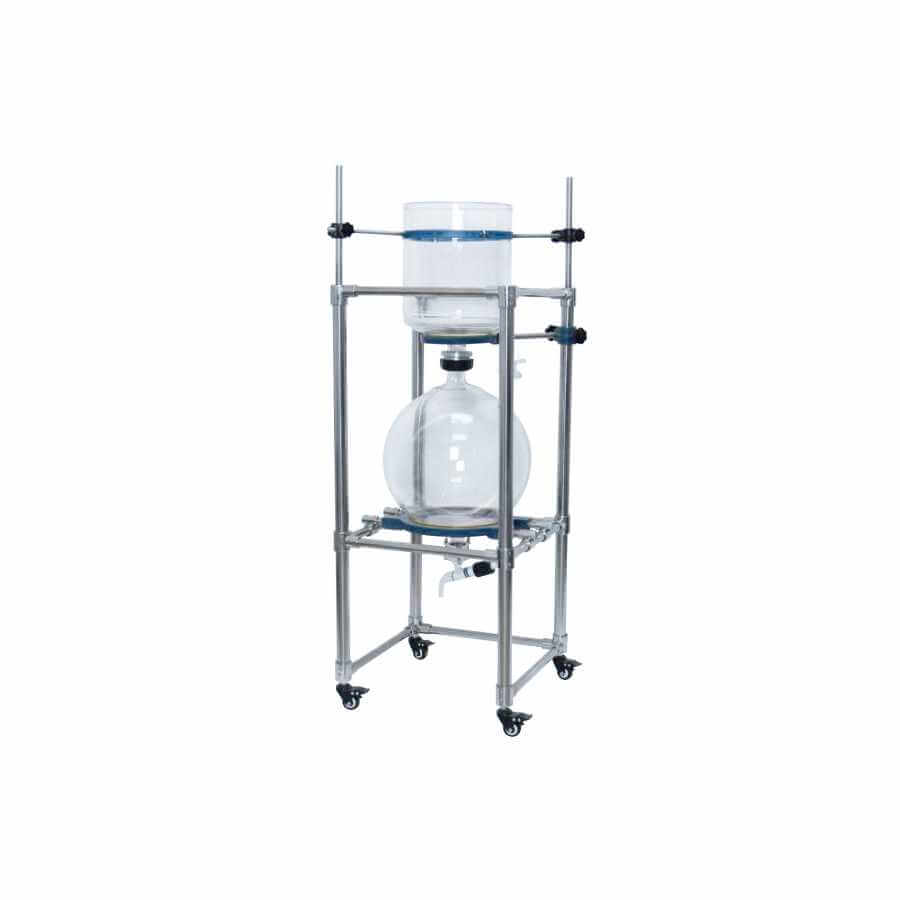

Glass Reactor
Glass reactors: used in chemical reactions, drug research and development, fine chemicals, food manufacturing, and other fields.
Material
glass
Capacity (L)
10-10000+
Mixing system
anchor, paddle, frame and others
Heating system
electric heating, oil heating and others
RUNGYU glass reactors are commonly used biochemical instruments and are widely used in modern fine chemicals, biopharmaceuticals, scientific research and experiments, and other industries. They can be used for concentration, distillation, reflux, separation, and purification reactions under the conditions of constant speed, constant force, and constant temperature. It is an ideal equipment for teaching, experiment, pilot test, and production.
Request a quoteThe body of the three-layer glass reactor is composed of three layers of glass and two sets of interlayers, which can provide a stirring function and control the evaporation and reflux of the reaction solution. The inner layer of the three-layer glass reactor is used for heating or cooling, and the outer layer is used for vacuuming. Under the outer vacuum state, try to maintain the cooling or heating temperature of the materials in the three-layer glass reactor. The materials react in the three-layer glass reactor. After the reaction is completed, the materials are discharged from the outlet at the bottom of the reactor.
The functions of a three-layer glass reactor are the same as a single-layer and double-layer glass reactor. It is a material synthesis instrument in the fields of chemical industry, biopharmaceuticals, petroleum, scientific research, experiments, and other fields. Distillation and concentration can be carried out under constant speed, constant force, and constant temperature conditions. , reflux, separation, purification, and other reactions.

Maintenance of three-layer glass reactor
1.Before use, carefully check the instrument to see if the glass bottle is damaged and whether the interface is consistent, and be careful to handle it with care.
2.Wipe each interface with a soft cloth (you can use a napkin instead), and then apply a little vacuum grease. (Be sure to cover it with vacuum grease after use to prevent lime sand from entering.)
3.Each interface should not be tightened too tightly and should be loosened regularly to avoid long-term locking causing the connector to become stuck.
4.Turn on the power switch first, and then let the machine run from slow to fast. When the machine stops, bring the machine to a stop state and then turn off the switch.
5.Do not tighten the PTFE switches everywhere, as this can easily damage the glass.
6.After each use, various oil stains, stains, and solvent residues left on the surface of the three-layer glass reactor must be wiped off with a soft cloth to keep it clean.
7.After the reaction is completed, loosen each PTFE switch. The PTFE piston will deform if it continues to work for a long time.
8.Clean the sealing ring regularly. The method is: to remove the sealing ring, check whether there is dirt on the shaft, wipe it with a soft cloth, then apply a little vacuum grease and reinstall it to maintain the fit of the shaft. The sealing ring is smooth.
9.Water must not enter the electrical part, and it is strictly prohibited to get damp.
10.When repairing or inspecting the three-layer glass reactor, be sure to cut off the power and water source first.
Simple troubleshooting of three-layer glass reactor
1.Turn on the power switch, the indicator light does not light up. If the external power supply is not connected or has poor contact, have a professional electrician check the power supply and socket.
2.The fuse is short-circuited. Turn the power switch to the OFF position and replace the fuse.
3.The power indicator light is on but does not rotate. The shaft is rusty. Discontinue use and contact the supplier. Motor and electrical box failure. The seven-pin plug is not connected. Reconnect the seven-pin plug.
4.The vacuum suddenly disappears, the glass breaks, and the switch is damaged. Check the glass parts and replace the switch.
5.There is a vacuum, but it cannot be pumped up. The sealing ring is worn and the vacuum switch is leaking. Please replace the sealing ring and switch.
6.Sometimes there is no vacuum, there is dirt on the steel shaft, and the connector is loose. Please remove the dirt and check the vacuum meter and vacuum pump.
7.The vacuum hose is aging, please replace the vacuum hose.
8.The main spindle is loose left and right, and the top screw is loose. Tighten it.
9.The motor temperature is too high (room temperature plus 40°C is normal) and overloaded. Stop the machine and turn the shaft by hand to see if it is heavy. Clean the dirt on the contact part between the sealing ring and the glass shaft, and apply vacuum grease.
10.The speed display does not match the actual value, the voltage is unstable, and there are errors in it. Please contact a professional.
11.The shell is electrified, the heating pipe is cracked, and water has entered. Please ask a professional electrician to check.




